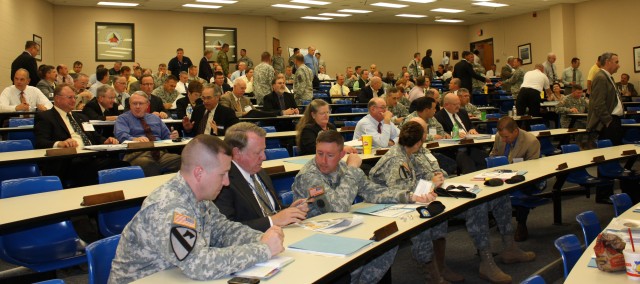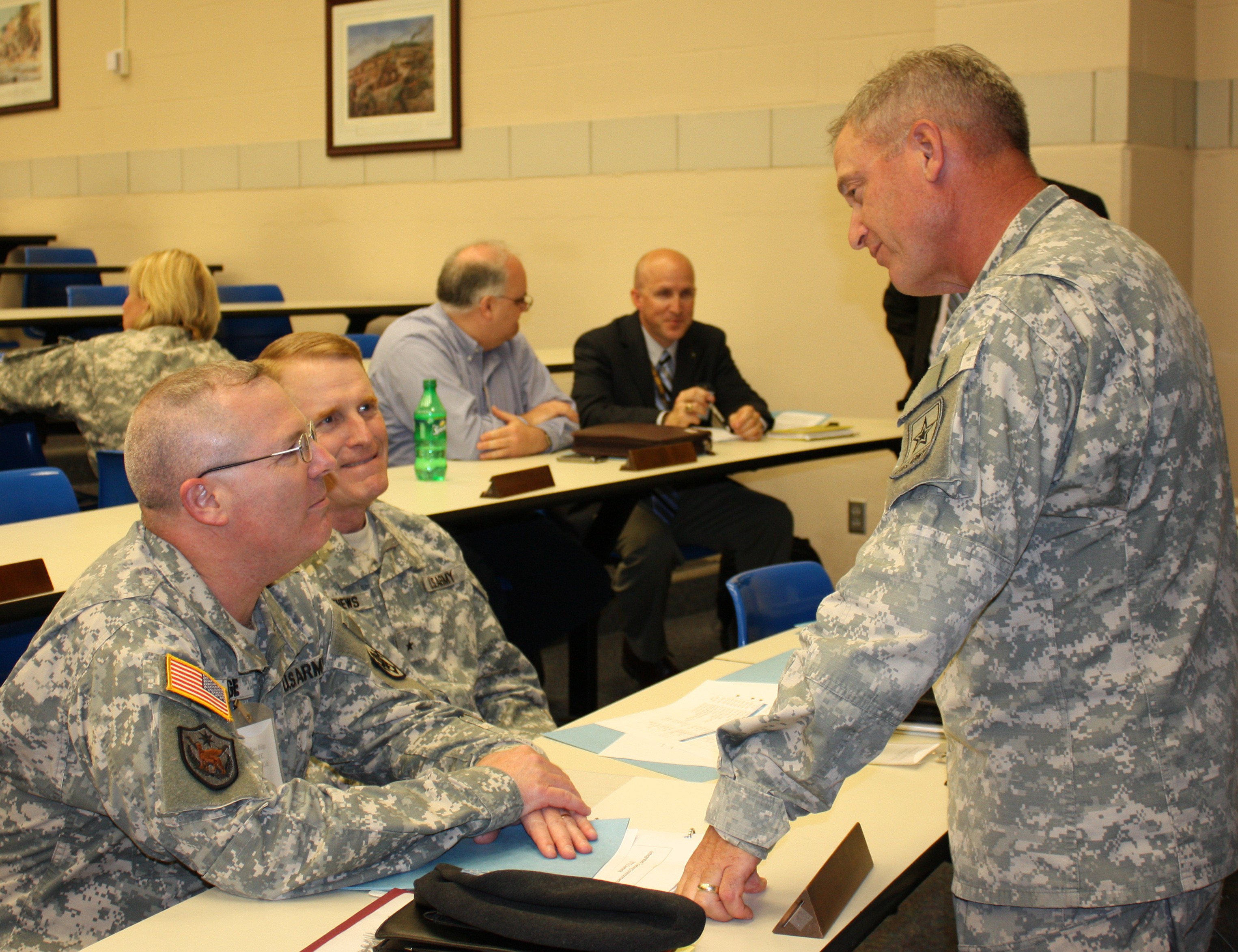FORT LEAVENWORTH, KS - More than 170 U.S. Army training leaders and staff members met 24-25 May for the Integrated Training Environment Summit to discuss groundwork to make the new environment available starting in 2012 and continuing through 2020.
Directed by the Army's Combined Arms Center-Training, the ITE will link selected training aids, devices, simulations and simulators (TADSS); infrastructure (land, ranges, Battle Command Training Centers, etc.); Battle Command/Knowledge Management systems; and a training scenario framework to deliver training and education that approximate Army full spectrum operations across the spectrum of conflict. The ITE initial phase of development will focus on home station training for the operational Army, followed by support to schools and centers, and finally on providing access to deployed units.
In his opening remarks, Lt. Gen. Robert Caslen noted the high level of participation in the ITE Summit. Caslen, who is Commanding General of the Combined Arms Center at Fort Leavenworth, said the participation indicates "how serious you and the community are about ITE and its tremendous potential and opportunities." He discussed how ITE will give Commanders more time to train and also will help train in a way that fits the preferences of coming generations of Soldiers.
"ITE is part of the Army's blended learning opportunities," Caslen said. "ITE's potential is huge for training of the future. As I look at it, this is exactly where we need to go for the Army."
ITE Summit participation included top training leaders from the TRADOC G3, JTCOIC, TRISA, PEO STRI, Department of the Army, FORSCOM, TRADOC HQ, the Combined Arms Center, schools, Centers of Excellence, USAR, IMCOM, NETCOM, ARNG, USARPAC and RDECOM.
In support of Army training doctrine, the ITE will help leaders close training capability gaps to a much greater extent than individual, stand-alone live, virtual and constructive training environments. Virtual and constructive training - tied together through the new Integrated Training Environment - will help Soldiers and units prepare so they'll enter live exercises at a higher skill level. "You have to build to the higher event," Col. (Promotable) Paul E. Funk II told ITE Summit attendees. Funk is Deputy Commanding General for the Combined Arms Center-Training.
The ITE will maximize effects gained from combat multipliers, expand the training area of operations, and reduce personnel overhead significantly while enabling realistic Joint, Interagency, Intergovernmental, and Multinational (JIIM) training. It eventually will provide access to distributed, on-demand training capabilities and a persistent learning capability anywhere, anytime.
Advancing the ITE from a concept to reality is complex. Input from the ITE Summit participants will be used to identify training as well as technology gaps as well as required capabilities to close those gaps so the ITE can move forward. Next step will be to develop a detailed campaign plan and gain approval no later than the start of Fiscal Year 2011.
Based at Fort Leavenworth, Kan., the U.S. Army's Combined Arms Center-Training delivers training programs, products and services to leaders and units in support of Army readiness. Wherever Army training occurs, the Combined Arms Center-Training helps make it happen. To learn more about the Combined Arms Center-Training, visit www.leavenworth.army.mil, www.facebook.com/usacactraining or www.twitter.com/usacactraining.




Social Sharing